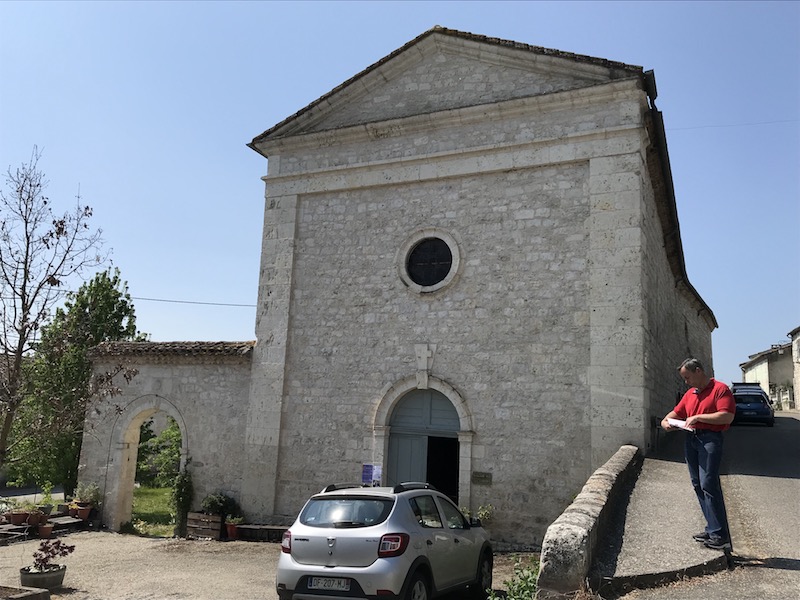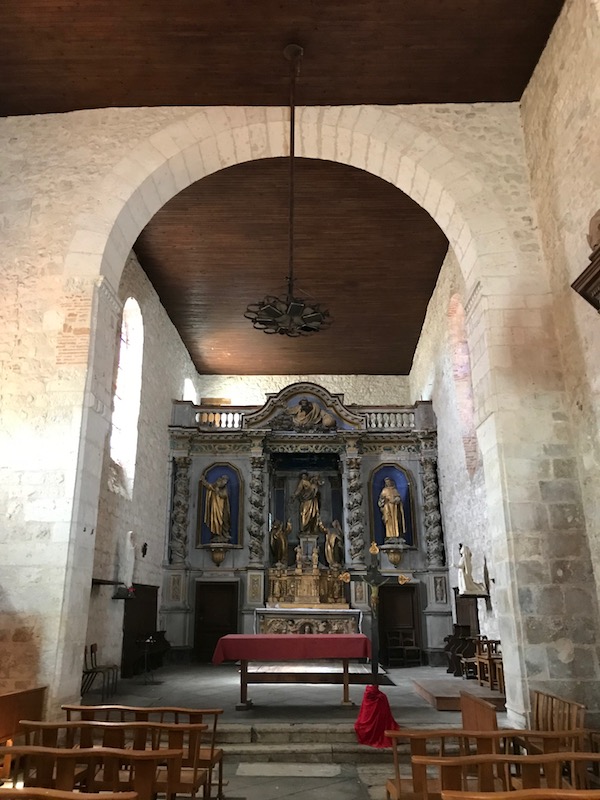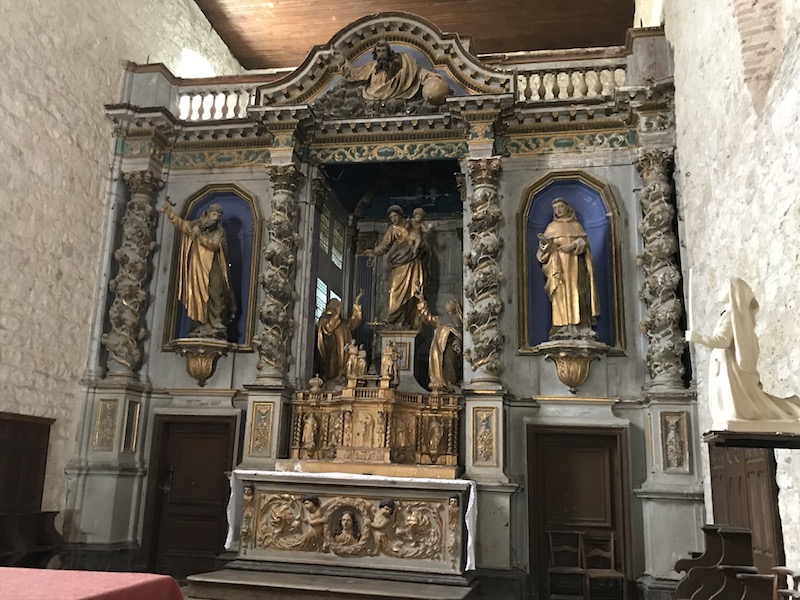Our Blog - Lauzerte, France
With the weather turning nice, we decided to restart our day-trips to small towns and villages nearby Toulouse. This weekend, we decided to head a little over an hour North-West to the village of Lauzerte, which is listed as one of the most beautiful villages in France. It is a hilltop village that used to be a castelnau, or a town protected by a castle. I have to compliment the Tourist Office here ... they have a nice brochure that has a walking route with 14 points of interest in the cité médiévale (medieval city) and 7 more in what they call the Faubourgs, or suburbs.
Originally, Lauzerte was a Gaulish oppidum, an ancient Celtic fortified town especially one under Roman rule. The most important time in the history of the town was within the middle ages. At the end of the 12th century, the Count of Toulouse received the hill as a gift to build a castelnau and distributed 200 building lots to the settlers. The "upper town" is full of medieval architecture and the main focal point is Place des Cornières and the Church of Saint Bartholomew.
A few pictures looking from the lower-part of the hill going up ... not ideal, but hopefully you get the idea.
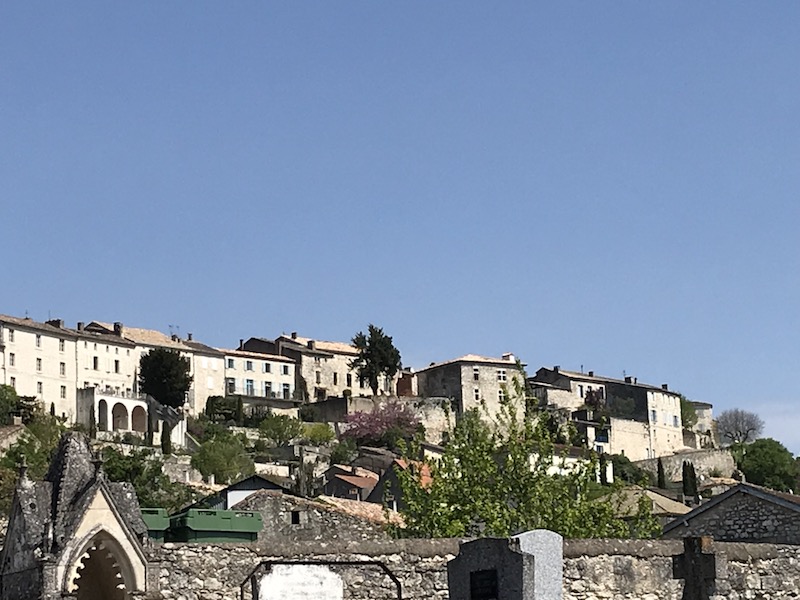
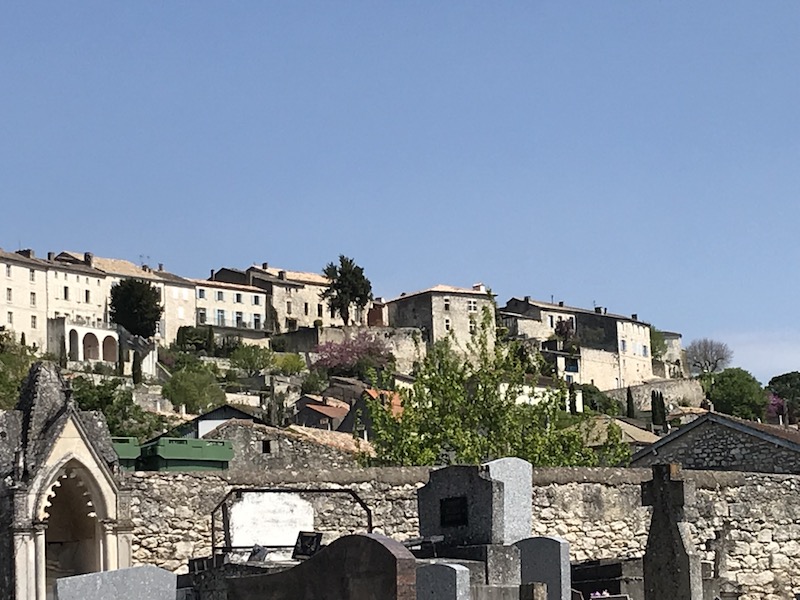

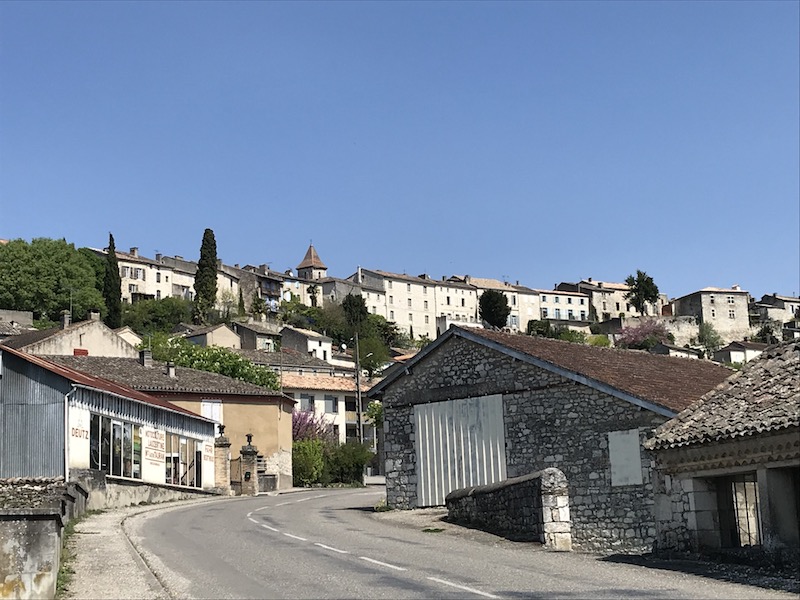
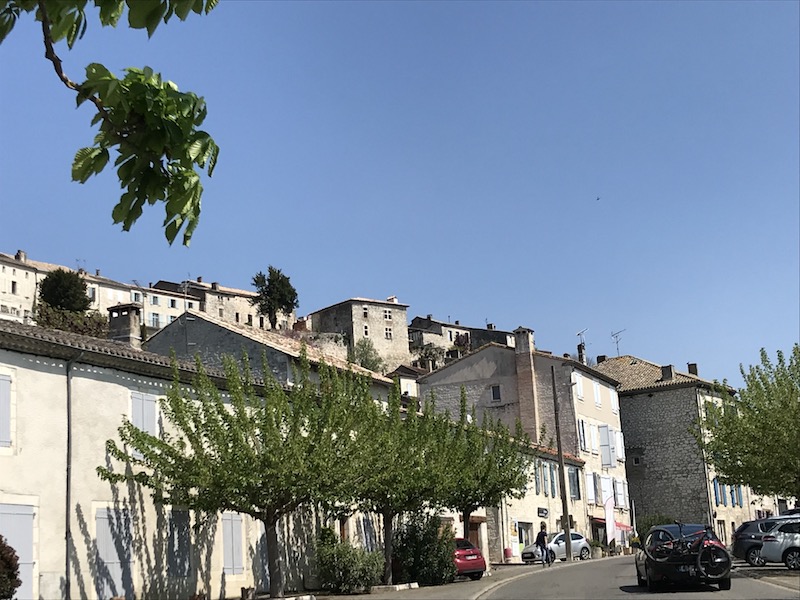
A few pictures from the top in various areas looking down over the valley below. It is a very agricultural area, and you can see lots of farmland down in the valley below. You can also see, in the first picture, the "suburbs" going down the side of the hill. The second gives a good view of the ramparts of the city, which were formed by houses that were built up against the rock of the hill.
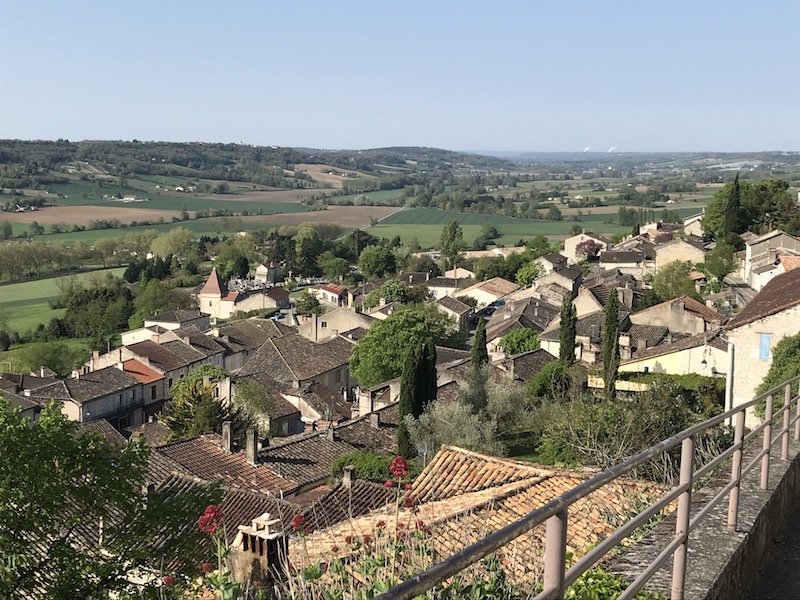
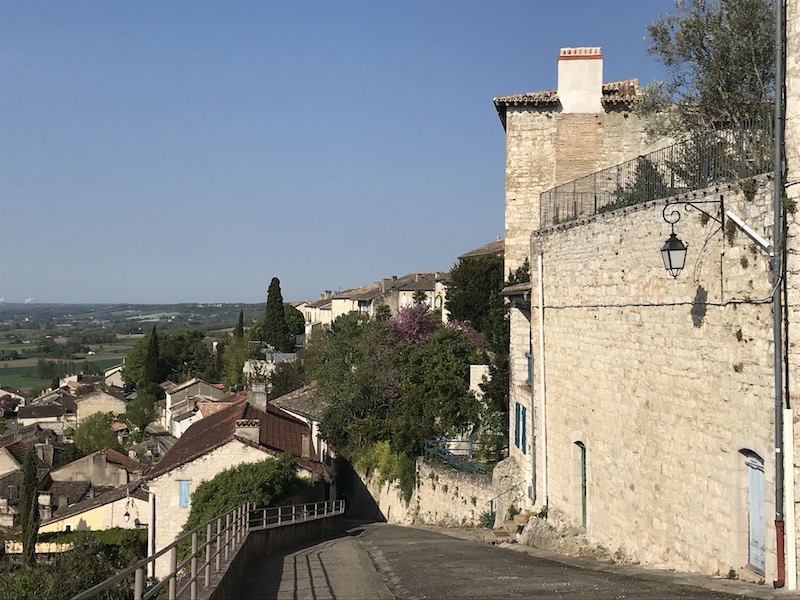
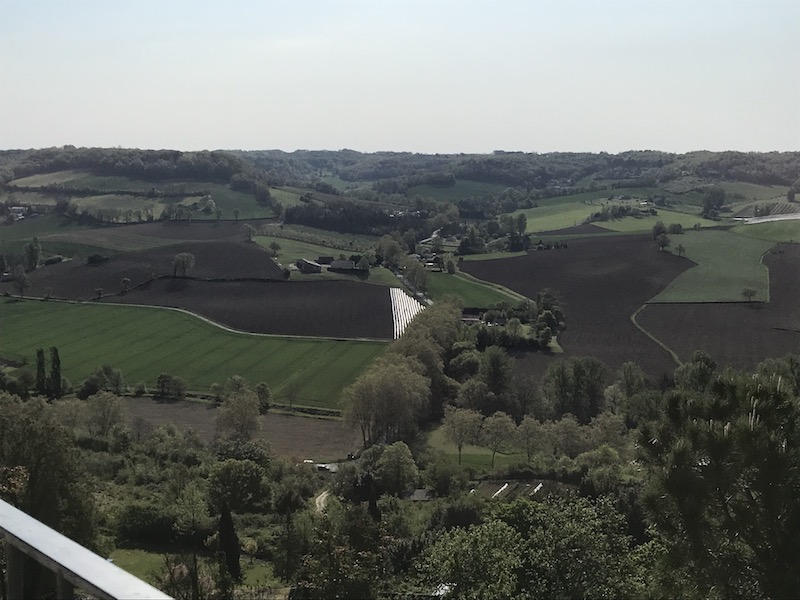

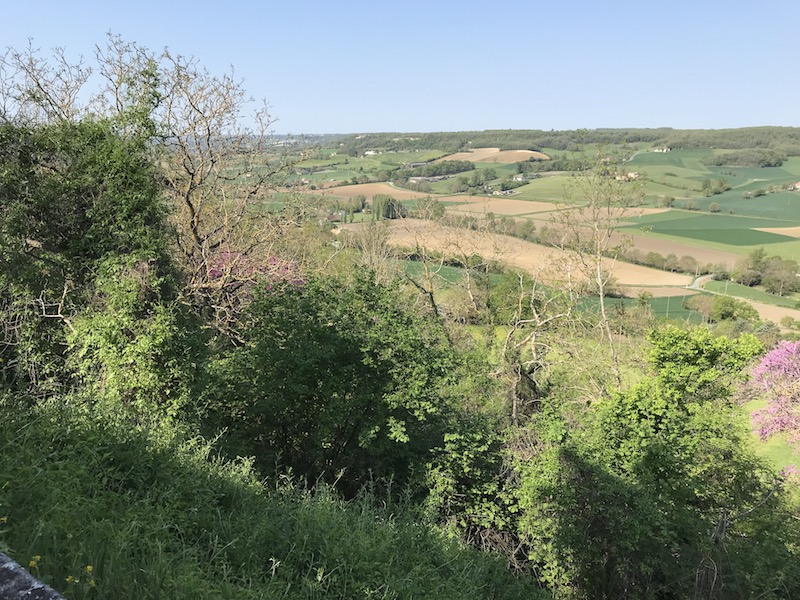
La Place des Cornières is the center of the city and there was a little market there this morning. Throughout history, it is the place where they held markets, announced consular decisions, and held entertainment and performances. All around the square are buildings with semicircular arches, some dating back as far as the 15th century.
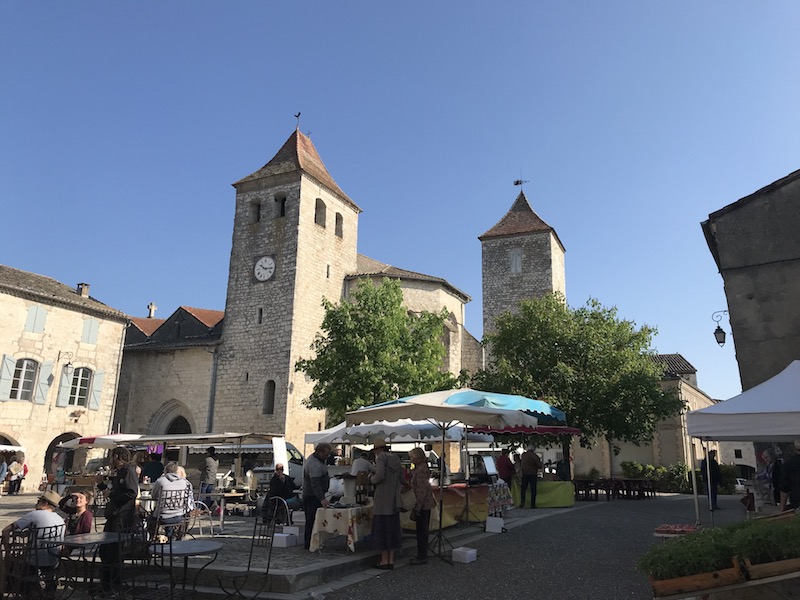
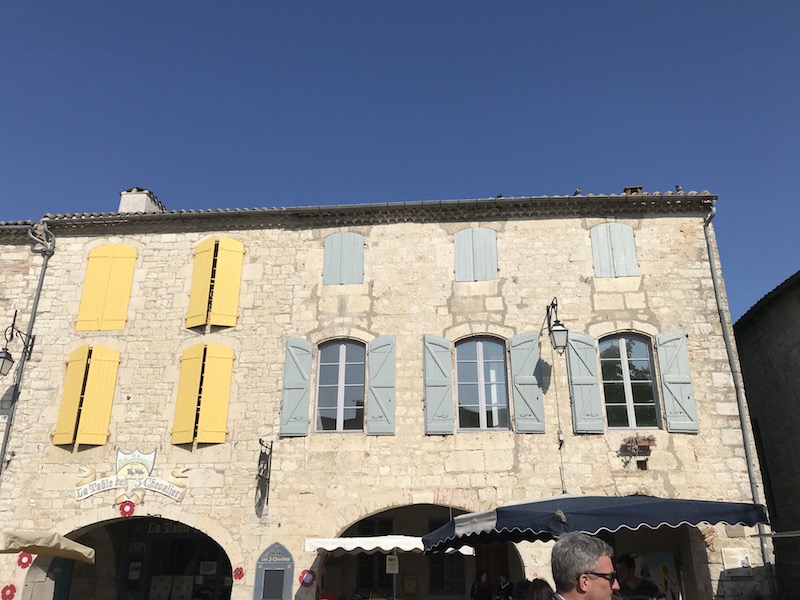

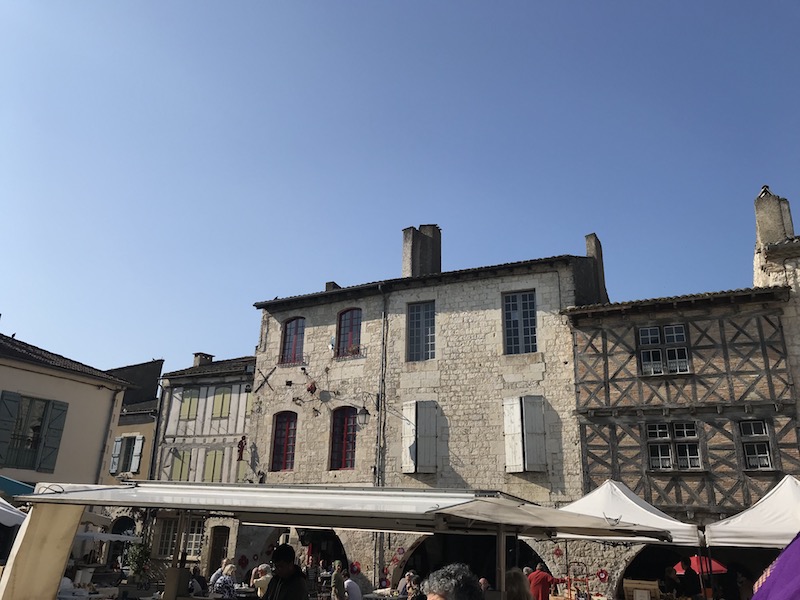
L’Eglise Saint Barthélemy dates back to the 14th century, and the entrance gate overlooking the square and the vault of Notre Dame Chapel both are still from that original Gothic building. It was ruined during the Wars of Religion and rebuilt. The nave, the spans and the five-sided choir date from the 17th century. The majority of the stained-glass windows date to the 19th century.


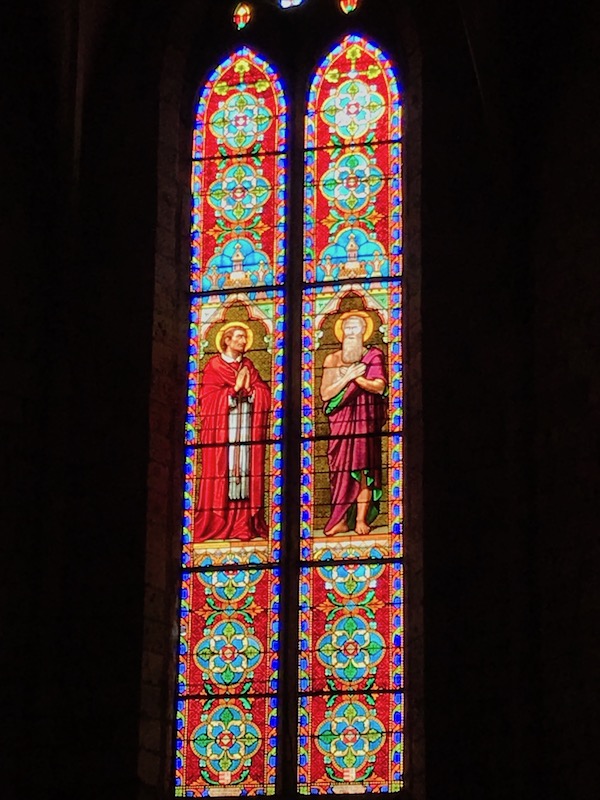
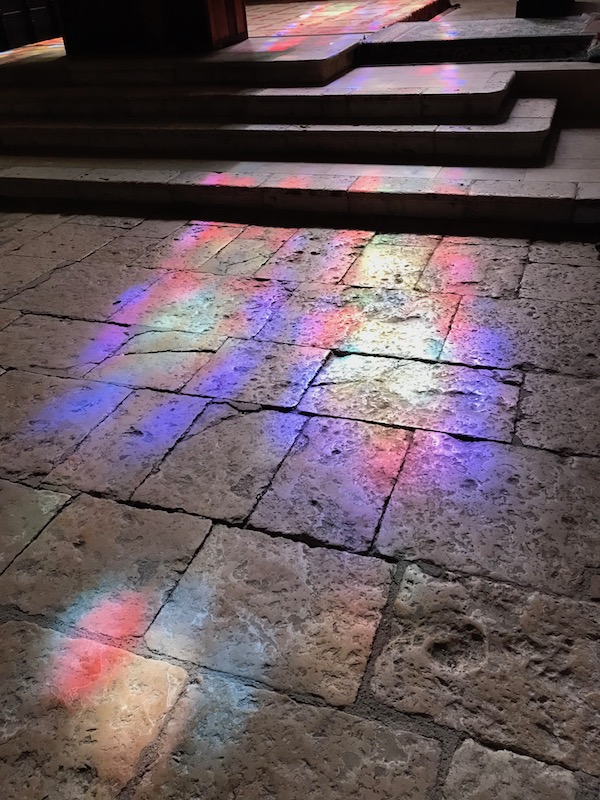

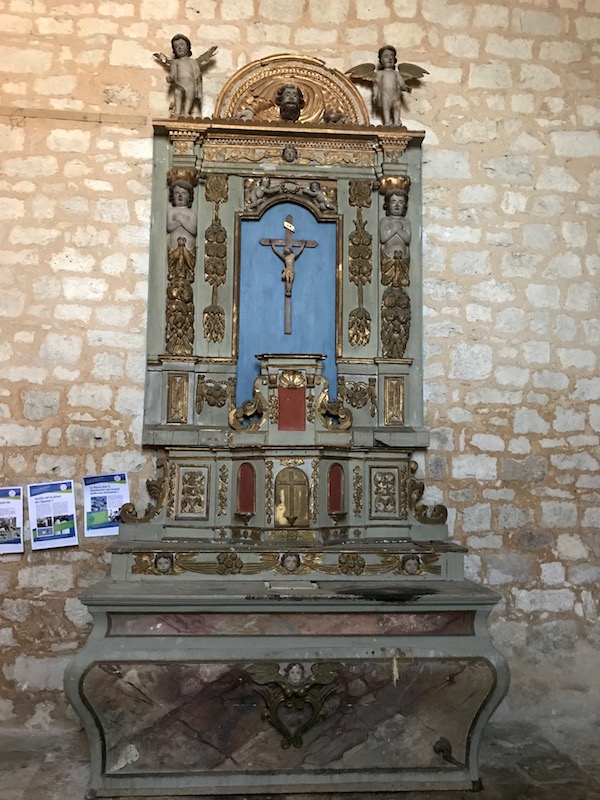
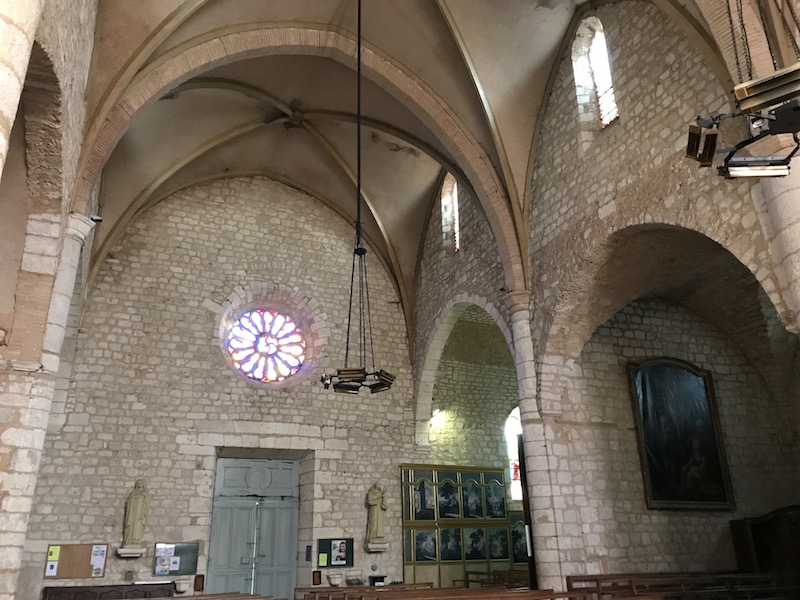
In the Chapel of Saint Antony the Hermit there was a set of Monochromes by the artist Joseph Ingres, dating back to the 18th and 19th centuries. There are about 40 paintings that represent different landscapes that he drew during a tour around France. The blue used is from the woad plant, which is the the plant that was used to create "pastel" which is the blue dye that made Toulouse a wealthy city.
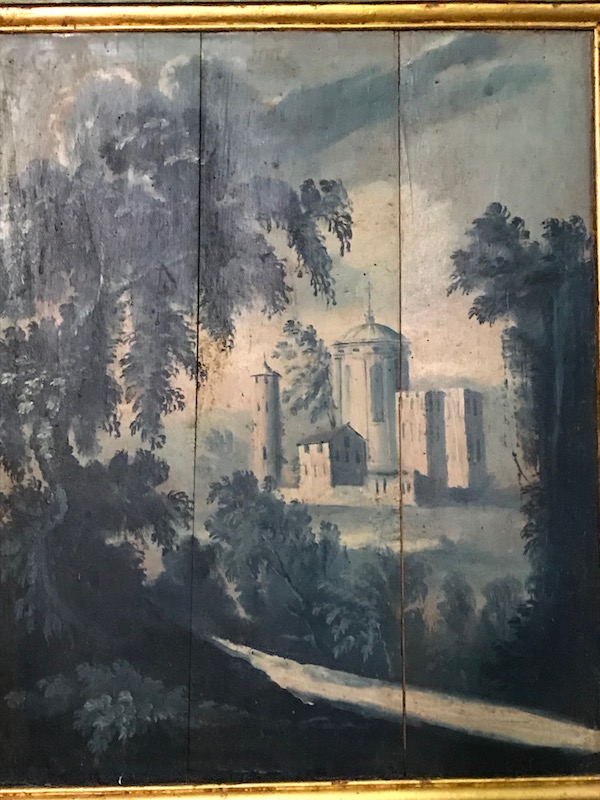
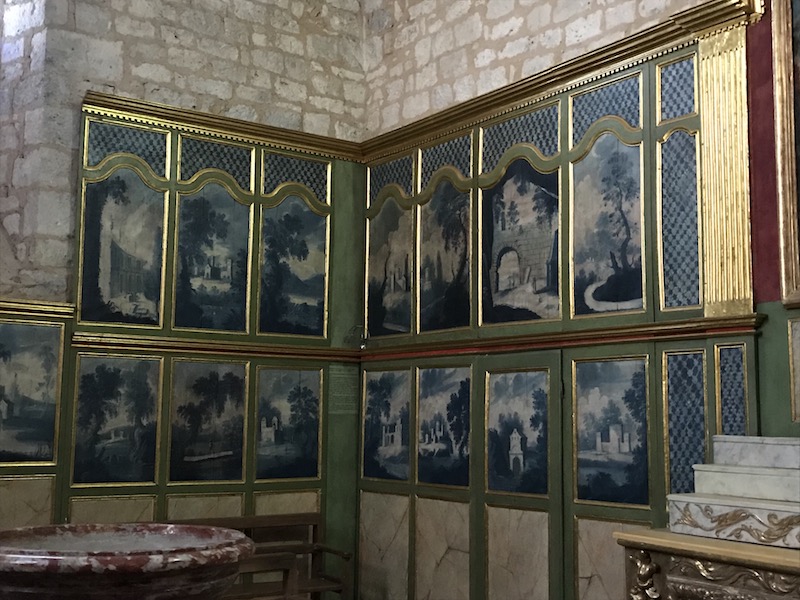
This building, known as the Garric's house, was remodeled in the 18th century and housed the secondary court of the area, which was an important jurisdiction until the French Revolution. In the basement (which I attempted to get a picture of the outside of in the 2nd picture), dates back to the 13th century and is dug into the rock. It was used as a storage place, which was important for the city. It allowed them to store commercial products as well as holding supplies needed in case of a siege of the city.

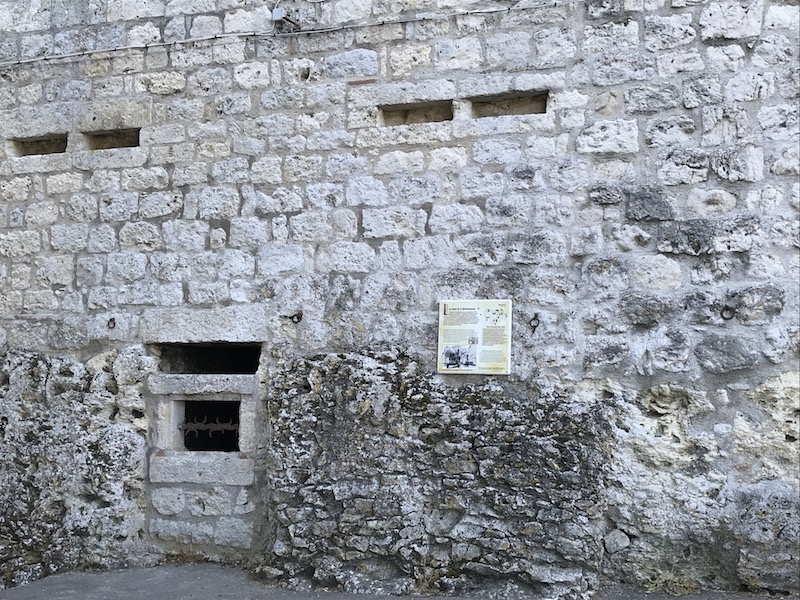
There are a few pictures that are random pictures of the streets and buildings, just to give you a feeling of the village.

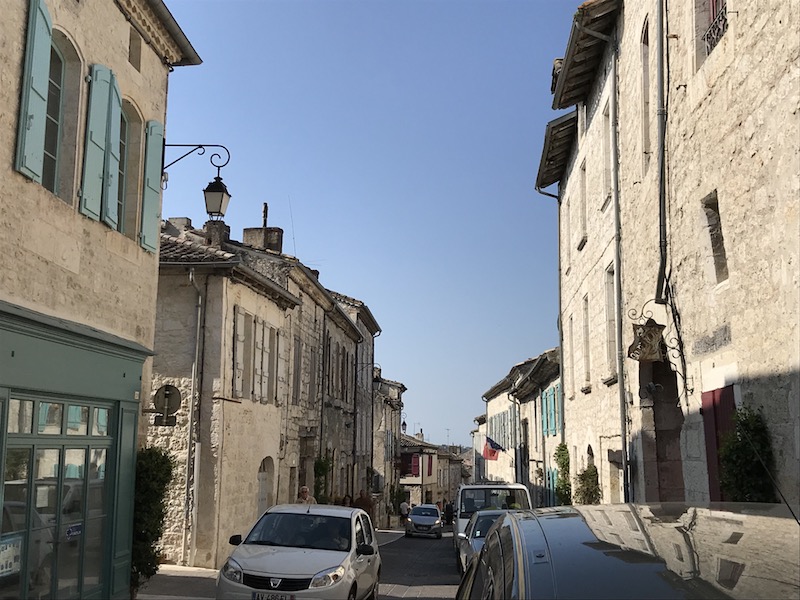

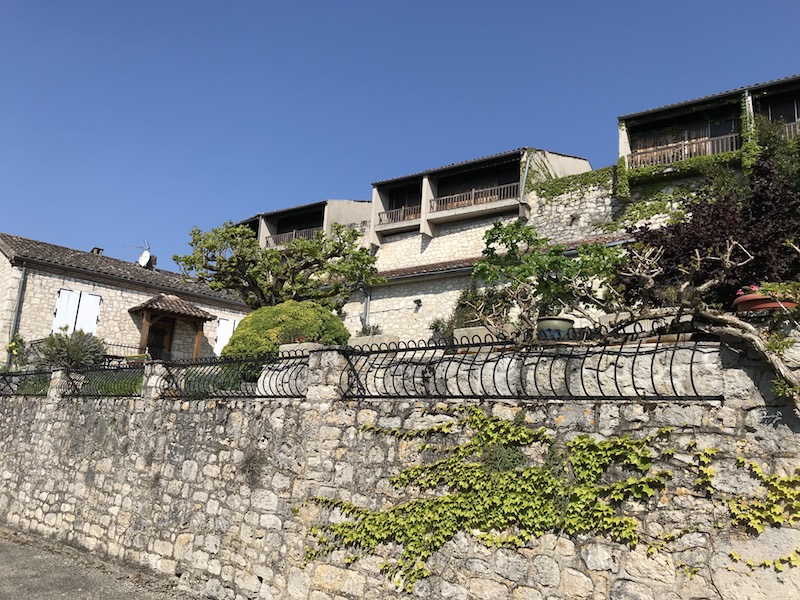

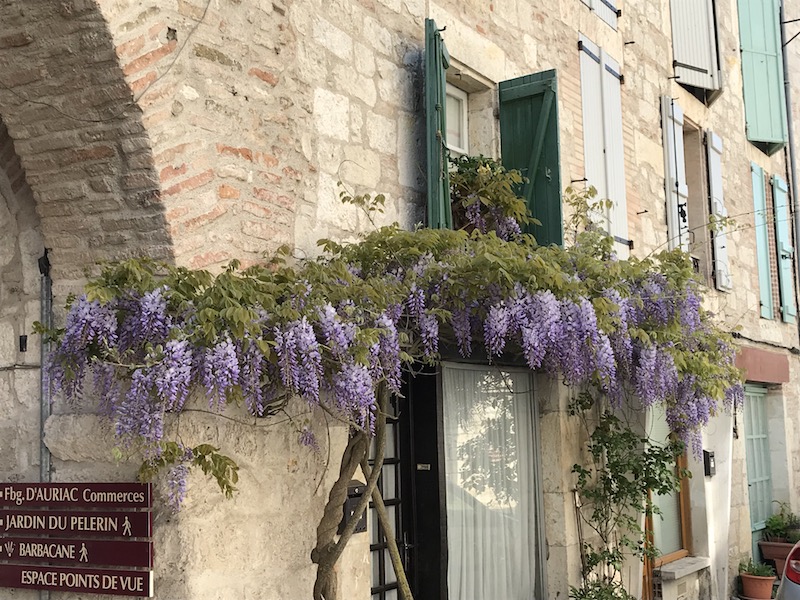
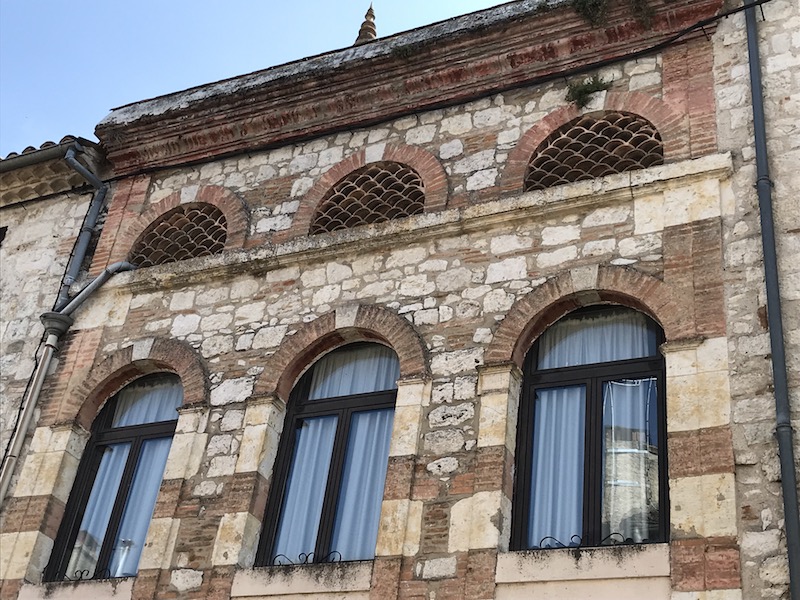
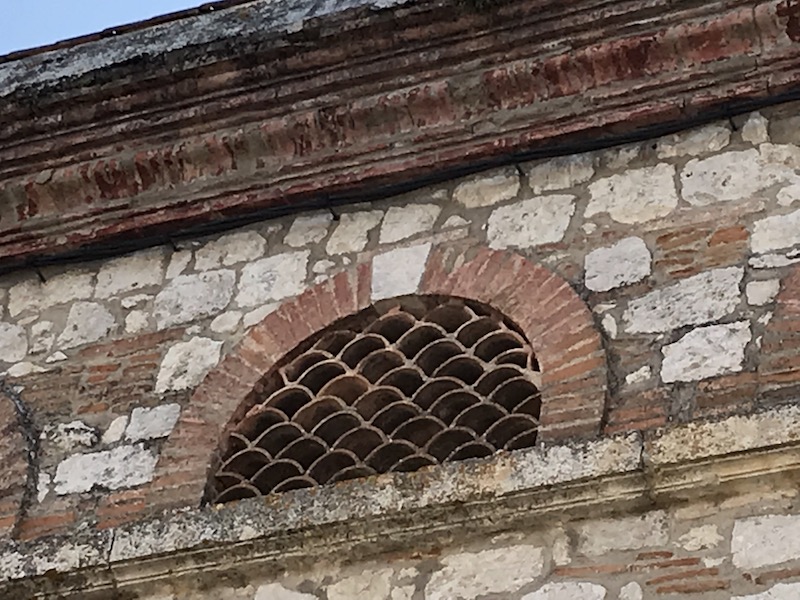
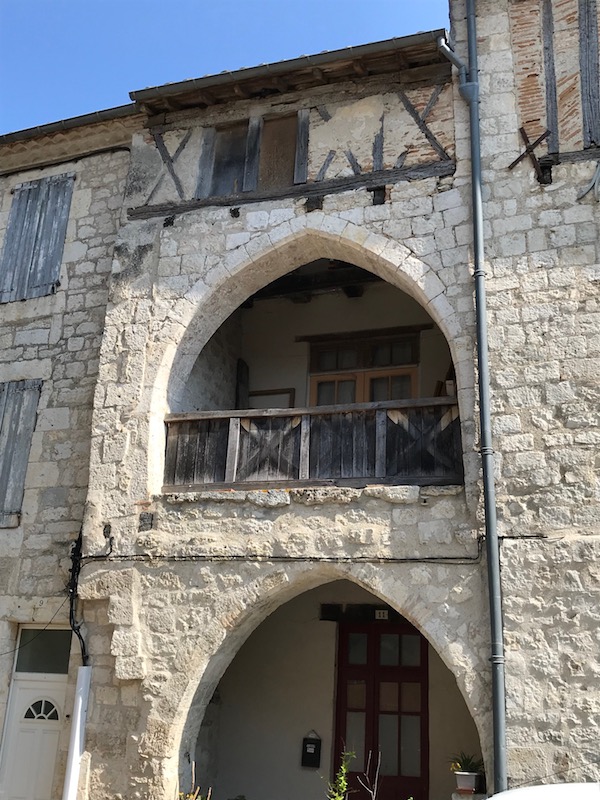
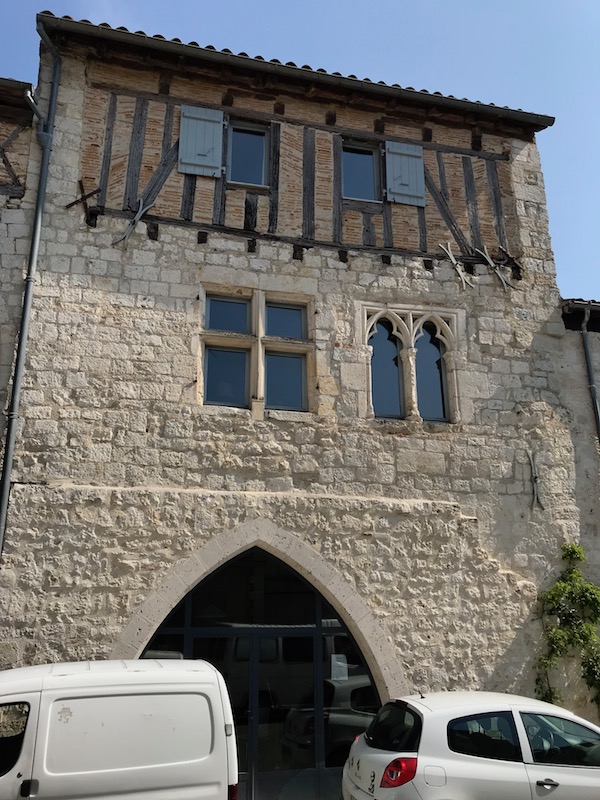
L’Hôtel de Ville is housed in a former school next to what used to be a chapel. It is on rue de la Mairie, which is one of the 2 main roads through the bastide. Several houses and mansions dating from the 17th and 18th century remain, some with medieval vestiges (doors, windows, etc).

Lauzerte has about fifteen wrought iron signs made by Sylvain Soligon, a former ironworker in Lauzerte. I didn't get pictures of all of them, but I tried to find the majority.
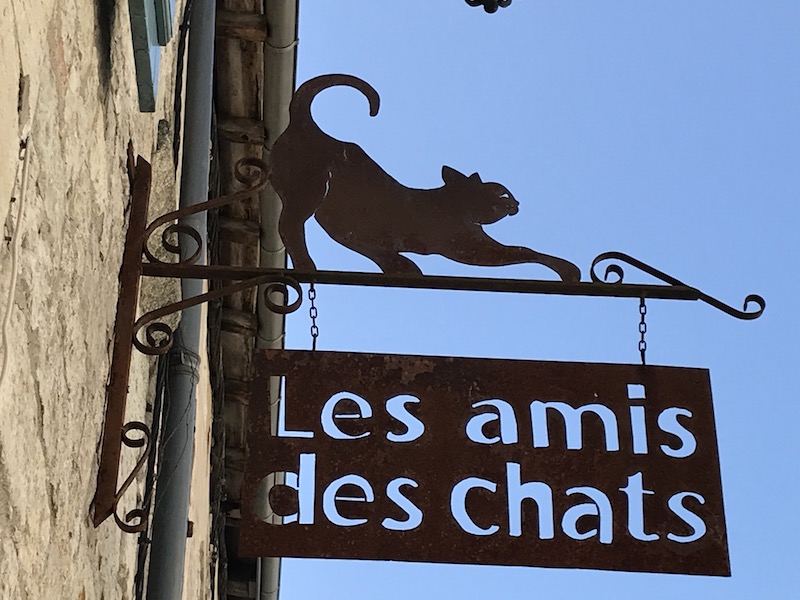
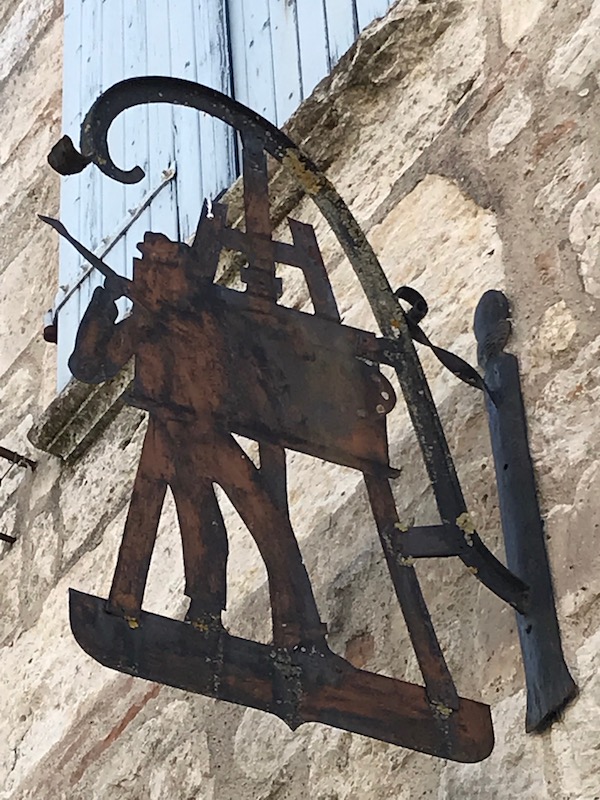
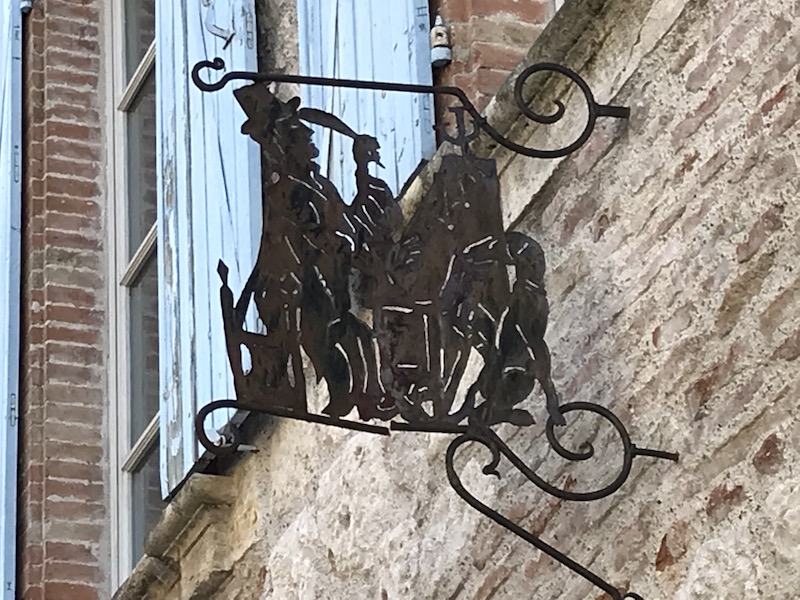
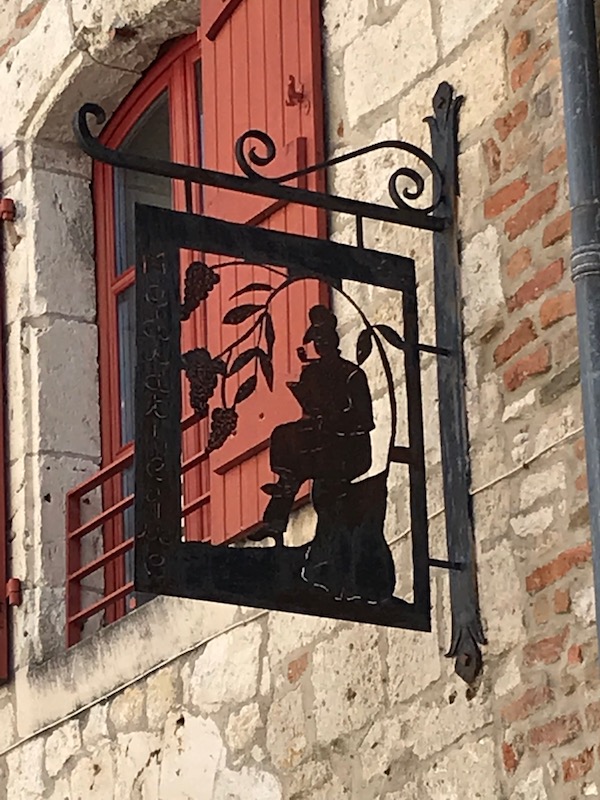
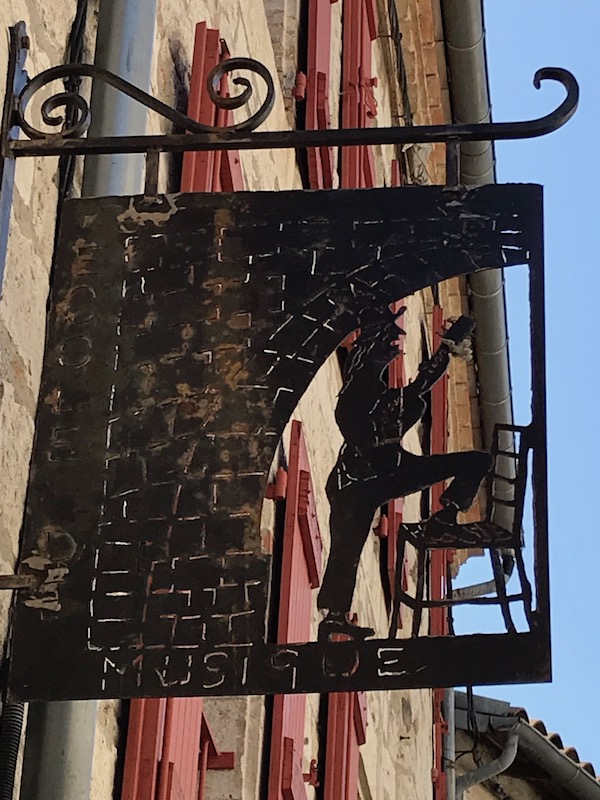
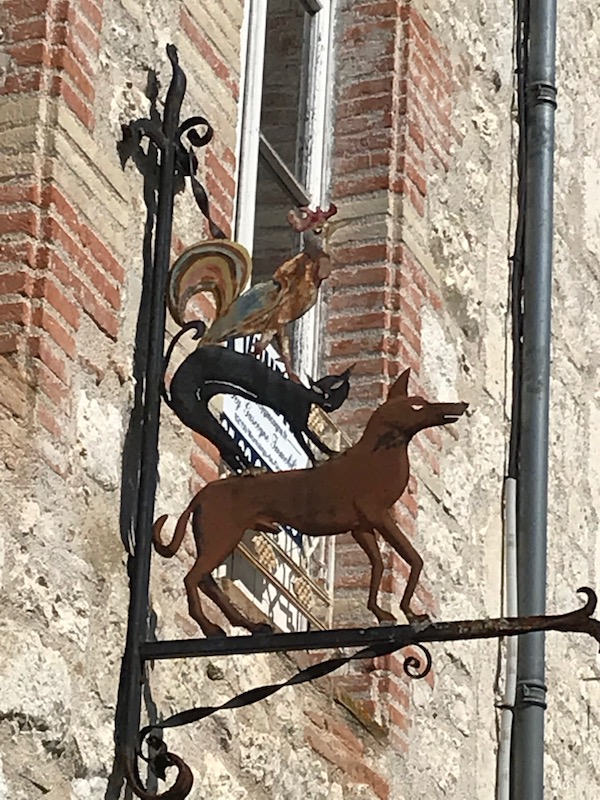
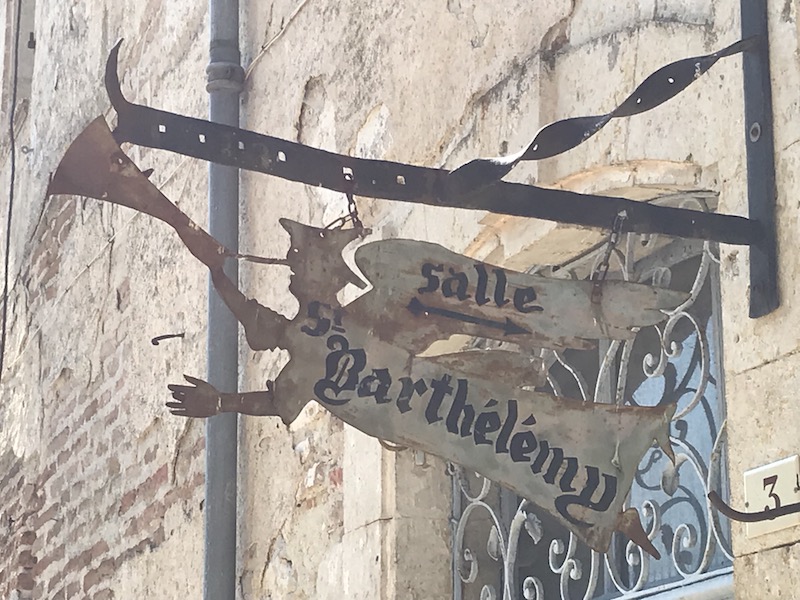
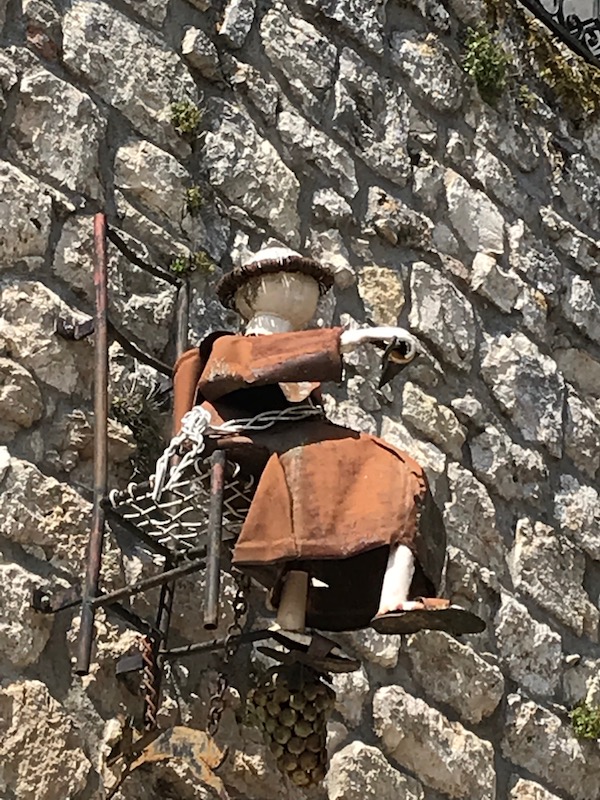
The Grand Rue is lined with white stone houses dating from the 13th and 14th centuries that were built for the merchants that were living here. Walking up the street, you can see the unity of their facades: on the ground floor are normally two gothic-arch openings (a large one for the shop and the small one for access to the home), a floor for the home that normally included a set of windows, and then an attic with an oculus (round window). The windows help date the house ... Gothic windows that just have a single pointed arch over the window dates from the 13th century, and by the 15th century the pointed arch had changed to multiple small arches. Also in the 15th century, some of the houses started having wood or stone mullion windows.
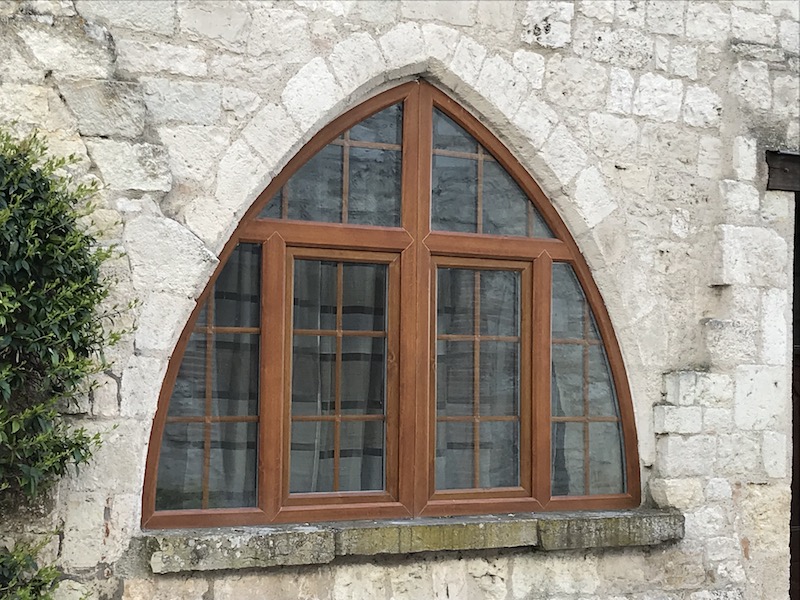
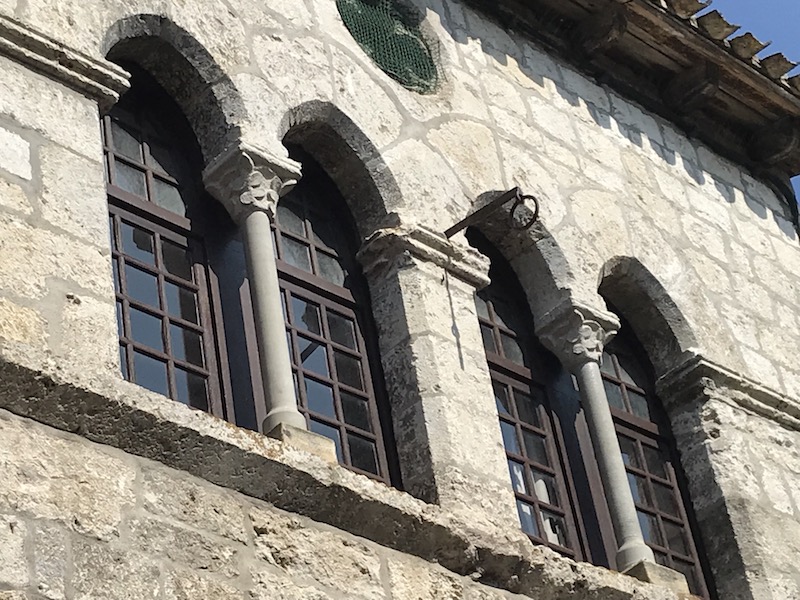
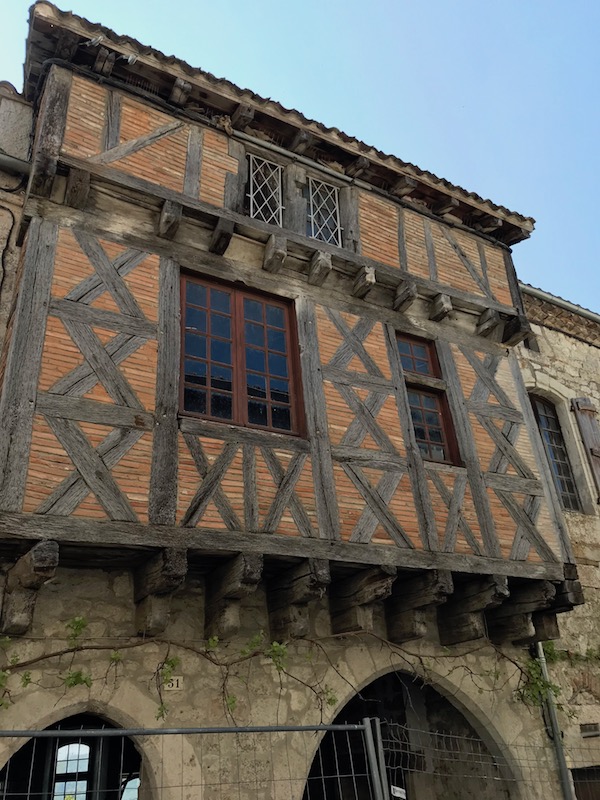
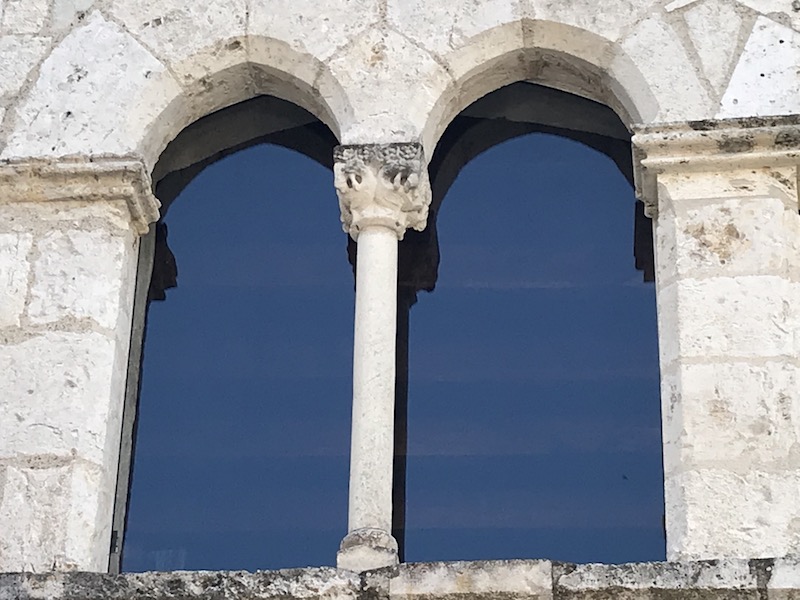
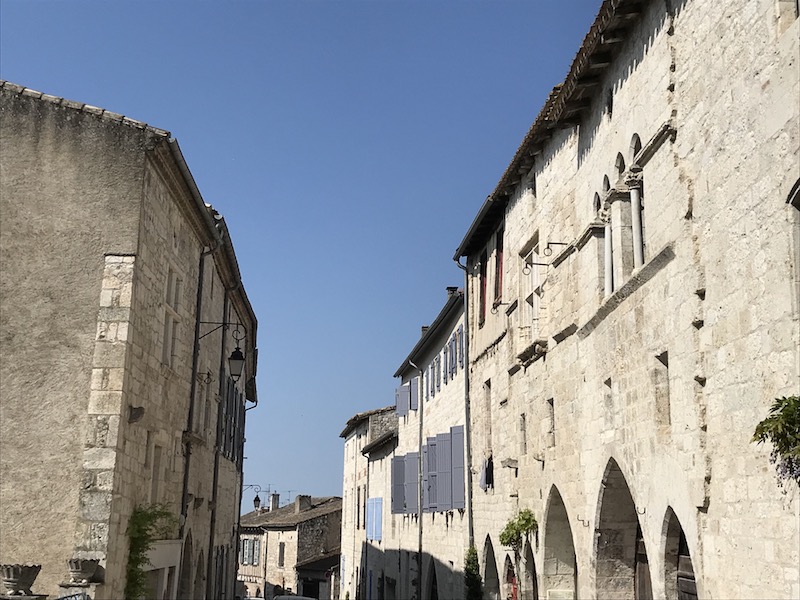
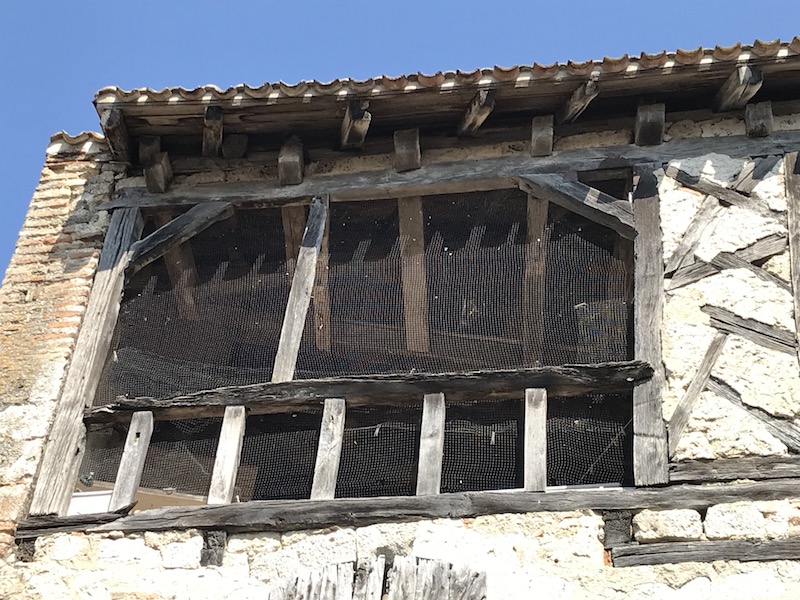
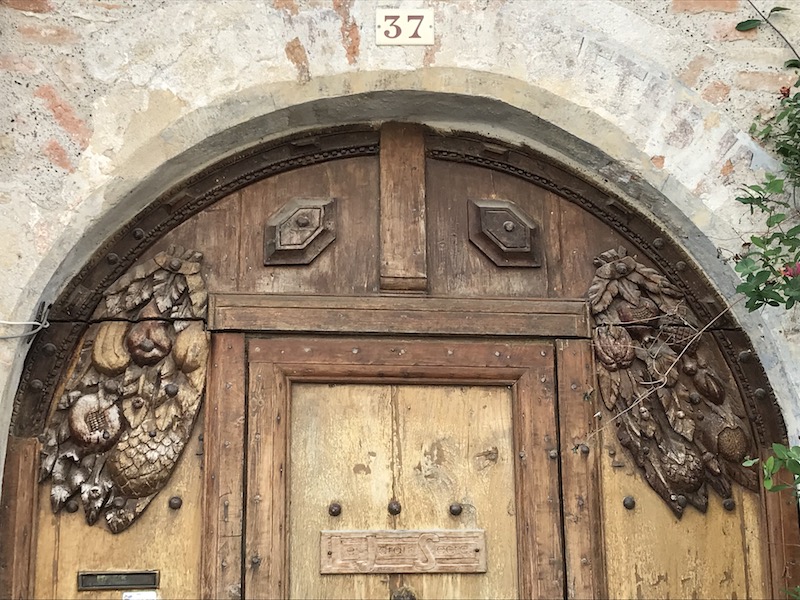


L’Hôpital Notre-Dame was first mentioned in 1222 and it has retained the entrance gate of the 18th century, the chapel and low rooms with beautiful brick vaults. In addition to the care provided, the hospital gave refuge to the many pilgrims of Saint Jacques and beggars. It experienced the great epidemics of Black Death in 1348, four times in the 16th century, then again in 1628, 1632 and 1682, each time decimating the population. You can see the sign now says "Maison de Retraite", which is a retirement home.
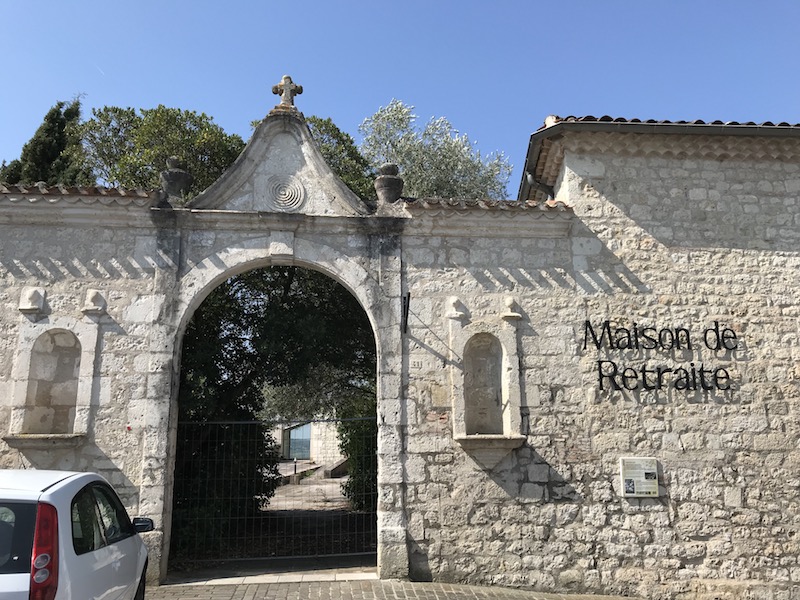
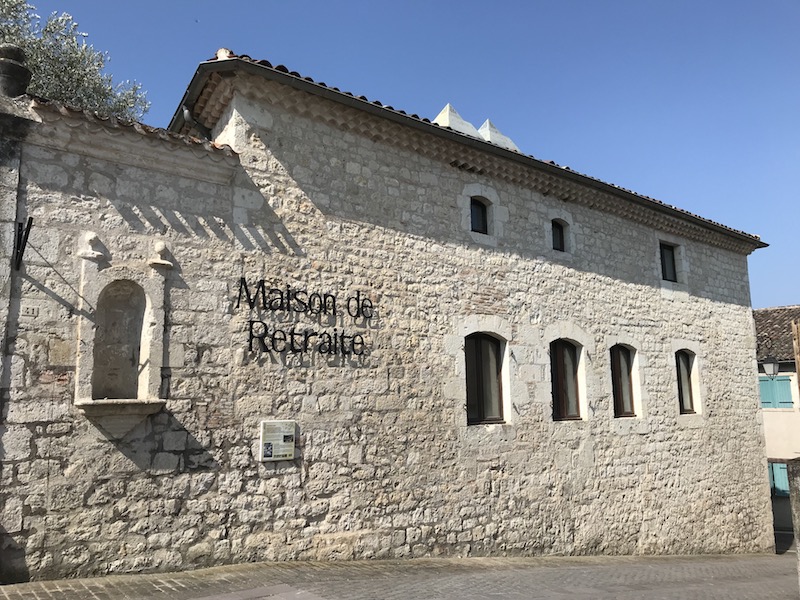
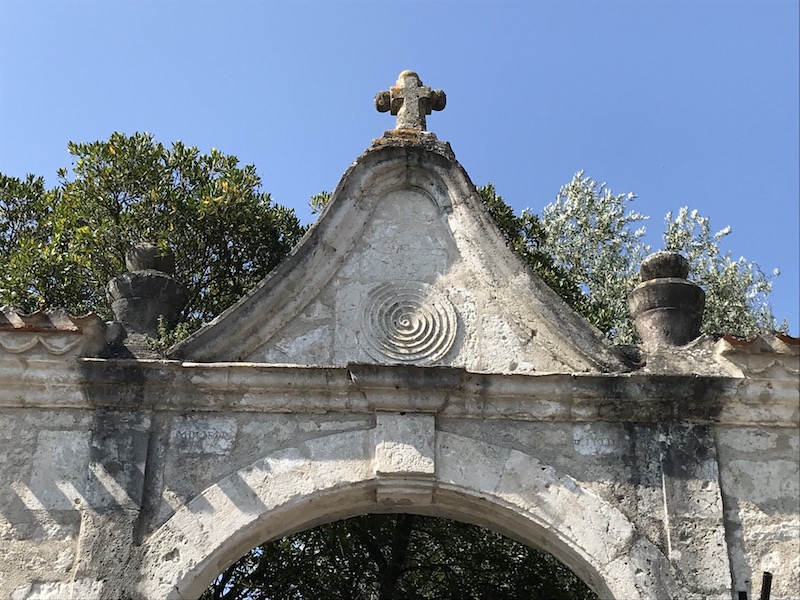

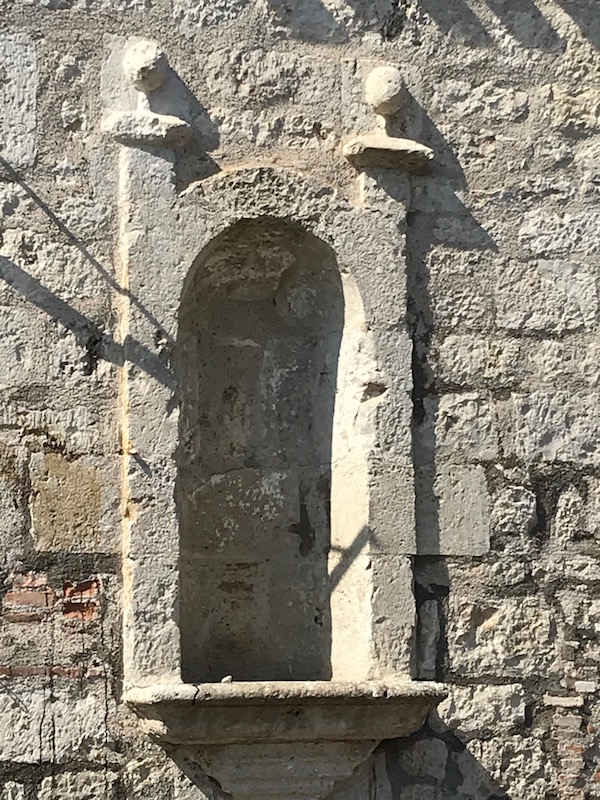
On some of the information panels (which were in both French and English), they had a picture from sometime in the past, which was really interesting to see the town in the past. Here you can see the Convent of the Clarisses, founded in 1623, which was the only convent of women in the city. The current tower is that of the old bell tower. Like many religious buildings in France, it was confiscated during the French Revolution and went through a variety of different uses. It housed Spanish prisoners of war, became a fodder store, and then a gendarmerie until 1976. It is now private property. You can see the intricate detail around the stone mullion window and above the door.
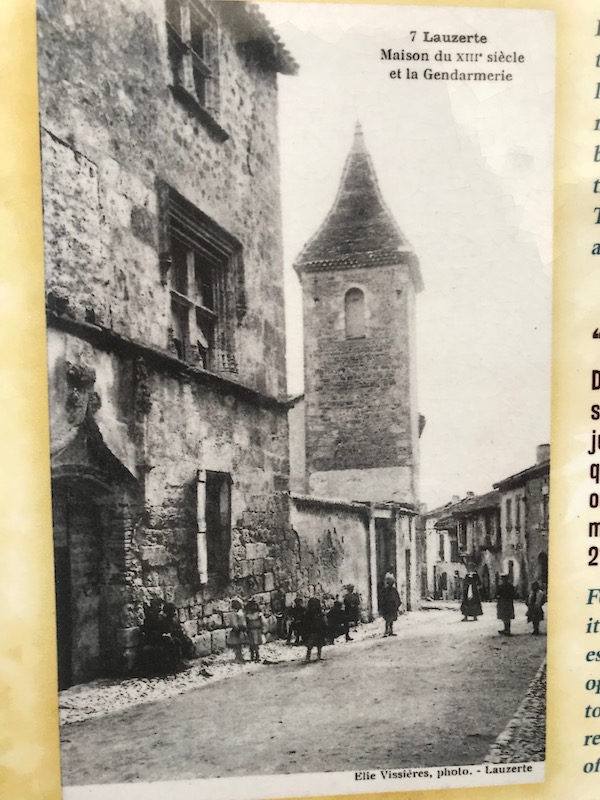
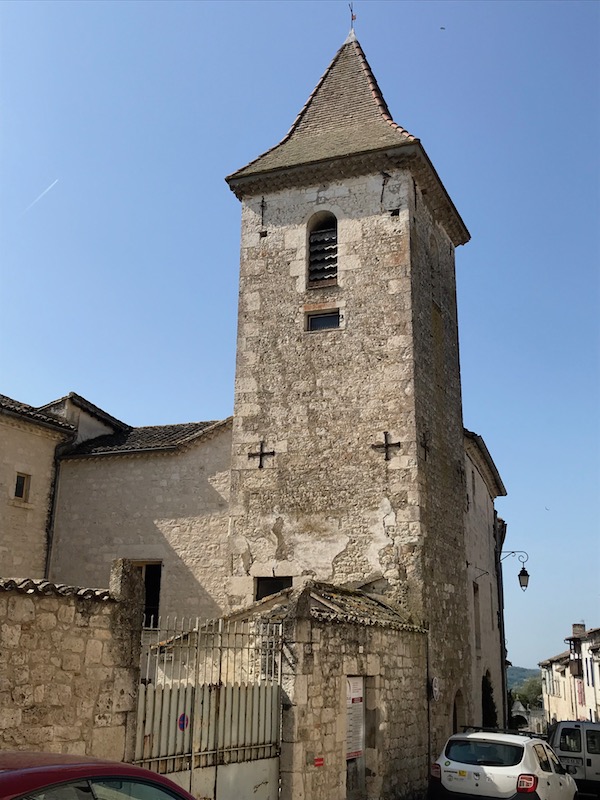

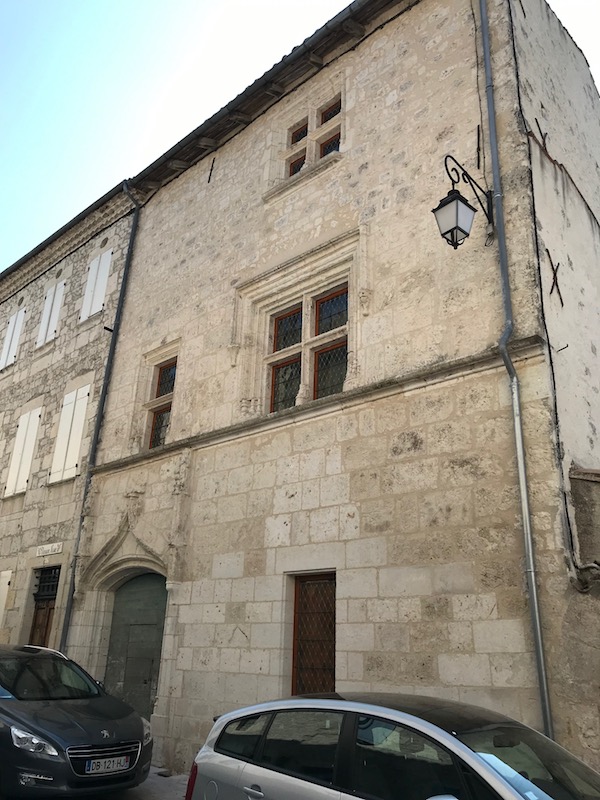
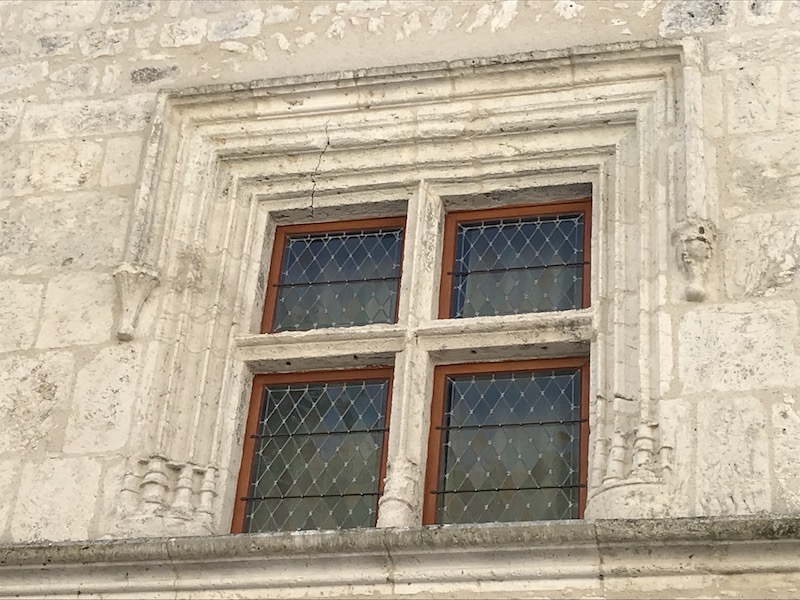
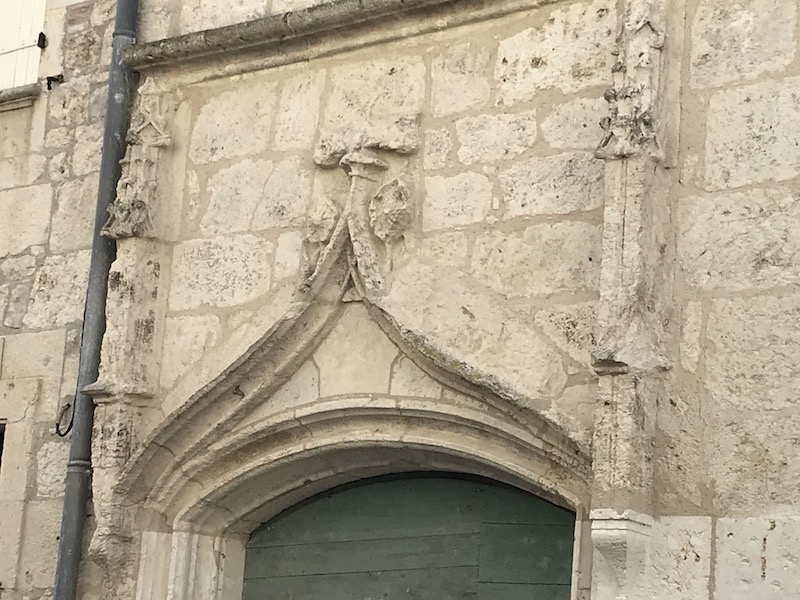
The view from La Place du Château makes it possible to appreciate the strategic and natural defensive position of the village. The Château that was built here was the origin of the creation of the city. Not much is left from the original building, only a vaulted lower room of the 13th century.
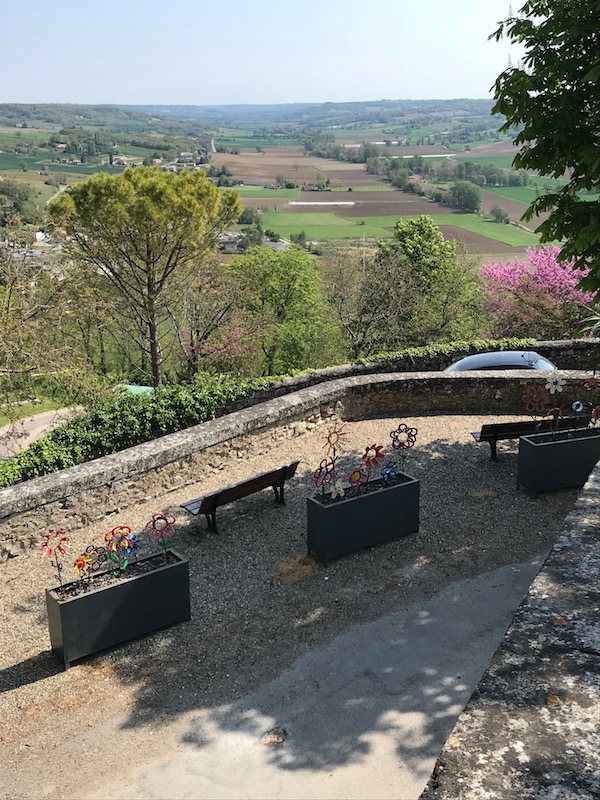
Located in the heart of the medieval city, the Pilgrim Garden was created by Alain Chave, former mayor of the town. It is designed as a life-sized game based on theme of the pilgrimage to Santiago de Compostela. Going through this (you can get a full leaflet at the Tourist Office), you can discover the life of pilgrims in the Middle Ages.
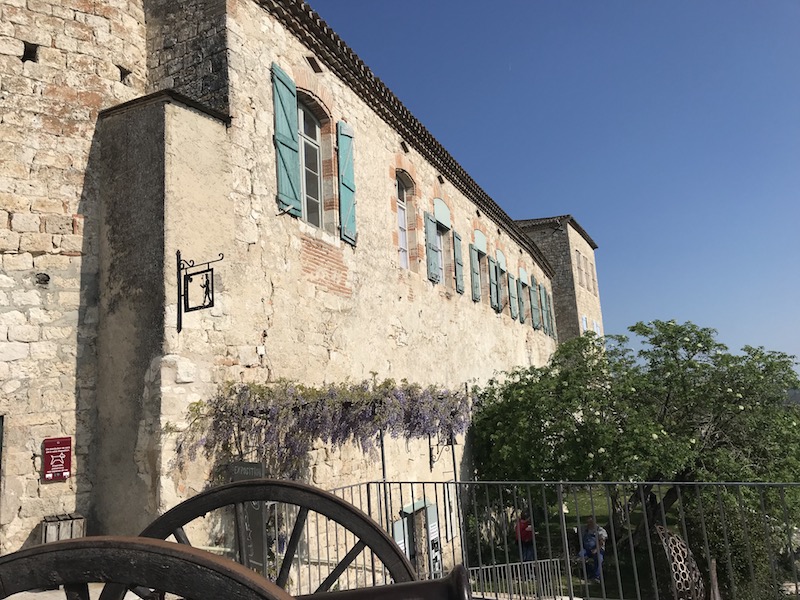

The Carmelites settled in Lauzerte in 1293 and founded a convent in 1305. After flourishing for 3 centuries, the church was ruined following the looting during the Wars of Religion, in 1562 and 1568. It was rebuilt in 1676, with the stones from some of the ramparts that had been destroyed. A large baroque altarpiece occupies the entire back of the choir.
